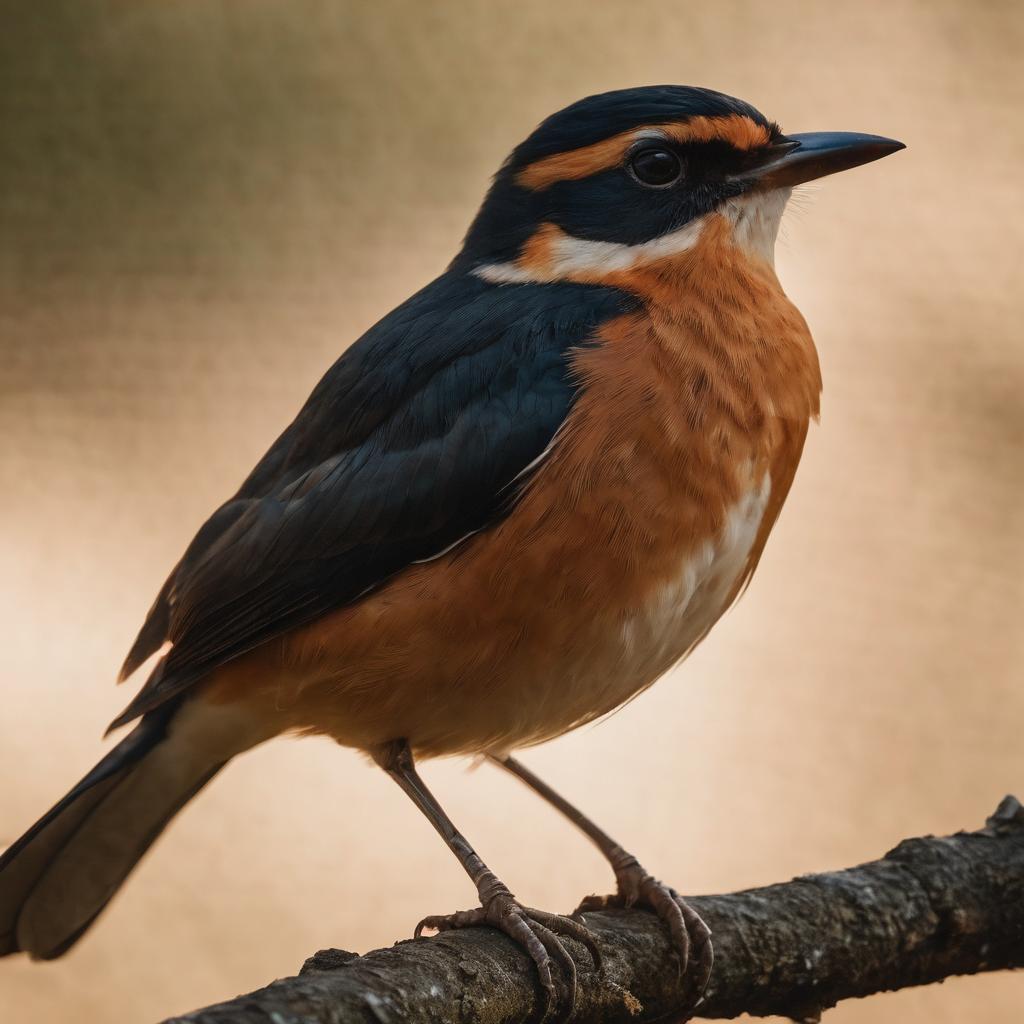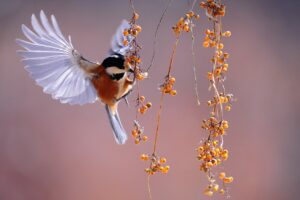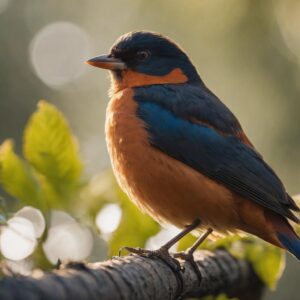
The Fascinating World of Birds
Contents
- 1 The Incredible Variety of Bird Species
- 2 The Adaptations and Survival Strategies of Birds
- 3 Bird Migration: A Marvelous Phenomenon
- 4 The Intricate Communication Methods Among Birds
- 5 The Remarkable Feeding Habits of Birds
- 6 Birds and Their Unique Nests and Nesting Behaviors
- 7 Bird Courtship Rituals: A Display of Beauty and Complexity
- 8 Birds and Their Role in Ecosystems
- 9 The Impressive Intelligence and Problem-Solving Skills of Birds
- 10 Birds in Mythology and Symbolism
The Incredible Variety of Bird Species
Birds are truly a marvel when it comes to their incredible variety of species. From the tiny hummingbird to the majestic eagle, the avian world is adorned with an astounding array of colors, shapes, and sizes. With over 10,000 different species spread across the globe, each one has its own unique features and characteristics. Whether it’s the flamboyant plumage of tropical birds or the stealthy camouflage of birds of prey, their diversity never fails to captivate and amaze.
Every corner of the world hosts its own set of distinct bird species, each adapted to its specific environment and habitat. In rainforests, you’ll encounter an array of vibrant parrots, toucans, and macaws, while deserts are home to resilient species like the cactus wren and sandgrouse. From the frozen plains of the Arctic to the lush wetlands of the tropics, birds have truly conquered every imaginable niche. Their remarkable ability to adapt and thrive in diverse conditions is a testament to their evolutionary success. With such an incredible variety of bird species, it’s no wonder that they are one of the most beloved and studied creatures on our planet.
The Adaptations and Survival Strategies of Birds
Birds have evolved a wide range of adaptations and survival strategies that enable them to thrive in various habitats across the globe. One remarkable adaptation is their feathers, which not only provide insulation and aerodynamic capabilities for flight, but also serve as vibrant displays for courtship and territorial defense. These feathers can come in a myriad of colors, patterns, and shapes, helping birds blend into their surroundings or stand out in order to attract mates or establish dominance.
Another crucial adaptation is the unique structure of a bird’s beak, which is specialized to suit its specific dietary needs. From sharp, hooked beaks of birds of prey for tearing flesh, to slender, elongated beaks of hummingbirds for reaching into flowers, the beak shapes and sizes vary significantly among different species. Furthermore, many bird species possess specialized beaks for cracking seeds, probing for insects, or sifting through water for small aquatic organisms. These adaptations demonstrate how birds have evolved to exploit their surrounding resources and maximize their chances of survival.
In addition to these physical adaptations, birds have also developed various behavioral strategies to ensure their survival. One such strategy is flocking, where birds come together in large groups for increased protection against predators and to enhance foraging efficiency. By flying in synchronized patterns and keeping an eye out for potential threats, birds within a flock can share information and warn each other of danger. This cooperative behavior not only improves their chances of survival but also fosters social bonds among individuals within the group.
Moreover, many bird species have developed complex nesting behaviors to protect their offspring from predators and harsh environmental conditions. Some birds construct elaborate nests using twigs, leaves, and other materials, while others have adopted a cavity-nesting strategy, utilizing tree cavities or even artificial structures. These nesting behaviors are not only remarkable displays of their adaptability and innate instincts but also enable them to safeguard their young during vulnerable stages of their lives.
Overall, the incredible adaptations and survival strategies of birds illustrate their remarkable ability to thrive in a diverse range of environments. From their feathers and beaks to their behaviors and nesting habits, birds have evolved an array of impressive mechanisms that have allowed them to conquer the skies and flourish in ecosystems worldwide. Understanding these adaptations can provide us with a deeper appreciation for the resilience and ingenuity of these avian creatures.
Bird Migration: A Marvelous Phenomenon
Bird migration is undoubtedly one of nature’s most awe-inspiring spectacles. Every year, millions of birds embark on incredible journeys across vast distances, navigating obstacles, and overcoming various challenges along the way. This remarkable phenomenon serves as a testament to the instinctual drive and remarkable adaptability of these winged creatures.
The reasons behind bird migration are as diverse as the species themselves. Some birds migrate to seek better breeding grounds with an abundant food supply, while others undertake long journeys to escape harsh winters. Regardless of their motivations, birds must rely on their incredible navigational skills to reach their intended destinations. They utilize a combination of celestial cues, such as the position of the sun and stars, as well as landmarks and even Earth’s magnetic field to guide them on their paths. It is truly awe-inspiring how these small creatures can navigate with such precision over vast distances, sometimes spanning thousands of miles. Bird migration is a testament to the indomitable spirit and enduring resilience of these feathered travelers.
The Intricate Communication Methods Among Birds
Birds have evolved a fascinating array of communication methods that allow them to interact with their own species and other animals in their surroundings. Vocalizations play a significant role in bird communication, with different species producing a diverse range of calls, songs, and vocal patterns. These vocalizations serve various purposes, such as attracting mates, defending territories, and warning others of potential dangers. For example, the melodious songs of birds like the nightingale and the blackbird are not only a testament to their musicality but also serve as a way to establish their presence in a particular area.
In addition to vocal communication, birds also utilize visual displays to convey important messages. Displaying vibrant and elaborate plumage, many male birds engage in intricate courtship rituals to attract females. These displays can include flapping wings, puffing up feathers, and performing impressive aerial acrobatics. By showcasing their physical prowess and vibrant colors, male birds not only communicate their intentions to potential mates but also demonstrate their genetic fitness and ability to provide for offspring. The courtship dances of species like the peacock and the bird of paradise are mesmerizing examples of the visual communication methods employed by birds.
The Remarkable Feeding Habits of Birds
Birds have evolved an array of remarkable feeding habits that showcase their incredible versatility as hunters and foragers. One such feeding habit that fascinates scientists and bird enthusiasts alike is the “hovering” technique employed by hummingbirds. With their unique ability to stay suspended in mid-air, these tiny birds extract nectar from flowers with their long, specialized beaks. This feeding behavior allows them to reach deep into the spurs of certain flowers, ensuring their access to precious nectar reserves. As the hummingbirds hover, their rapid wing flapping creates a distinctive humming sound, which further adds to the beauty and intrigue of their feeding habits.
Another remarkable feeding habit seen in birds is the “dive hunting” technique exhibited by seabirds like the magnificent gannets. These impressive birds soar high above the water before folding their wings and diving headfirst into the ocean with incredible precision. Plunging into the depths at remarkable speeds, gannets use their keen eyesight to spot fish swimming beneath the surface. With remarkable agility, they navigate through the water, expertly snatching their prey using their sharp beaks. This daring and efficient hunting strategy enables gannets to secure their much-needed sustenance in the vast expanses of the ocean, providing a fascinating spectacle for observers lucky enough to witness it.
Birds and Their Unique Nests and Nesting Behaviors
Birds are known for their incredible ability to build nests, each species showcasing unique designs and construction techniques. One such example is the weaverbird, found in Africa. These industrious birds weave elaborate nests using various materials like grass, leaves, twigs, and even spider silk. The result is a tightly woven nest that offers protection from predators and the elements. In contrast, the tiny hummingbird builds exquisite cup-shaped nests, usually constructed with soft plant materials and spider webs, making them flexible and expandable for growing chicks.
Nesting behaviors vary greatly among bird species. Some birds, like the penguin, prefer to build their nests on rocky cliffs or in burrows, while others, like the bald eagle, construct massive nests atop tall trees. Interestingly, many birds, such as the albatross, are known to return to the same nesting site year after year, often reusing and refurbishing their old nests. This behavior ensures continuity and familiarity, as well as saving valuable energy and time spent on nest construction. Whether it’s a meticulously built nest or a simple scrape on the ground, the diversity in nesting behaviors reflects the remarkable adaptability and resourcefulness of birds.
Bird Courtship Rituals: A Display of Beauty and Complexity
Bird courtship rituals are captivating displays that showcase the beauty and complexity of avian behavior. Male birds often go to great lengths to attract their potential mates, using a variety of strategies to stand out from the competition. These rituals can be elaborate and involve intricate dances, vibrant plumage displays, and mesmerizing vocalizations. The complexity of these courtship rituals is truly remarkable, with each species having its own unique approach and set of behaviors.
One example of a bird species with an intricate courtship ritual is the peacock. The male peacock famously flaunts its long, vibrant tail feathers in a magnificent display known as “train raising.” With a fan-like pattern of iridescent colors, the peacock mesmerizes the female with its stunning visual spectacle. The male also utters a series of low-frequency calls to accompany the visual display, further enhancing its attractiveness. Such elaborate courtship rituals demonstrate the innate beauty and complexity that birds possess, and they continue to fascinate researchers and observers alike.
Birds and Their Role in Ecosystems
Birds play a vital role in maintaining the delicate balance of ecosystems around the world. As natural predators, they help control the population of insects, rodents, and small mammals, thus preventing outbreaks that could have detrimental effects on agricultural crops and human health. For example, birds like owls and hawks are known for their exceptional hunting skills, keeping rodent populations under control, and reducing the damage caused to crops.
Additionally, birds contribute to the dispersal of seeds through their feeding habits. As they consume various fruits and berries, the undigested seeds are later deposited in different locations through their droppings. This process aids in the propagation and distribution of plants, allowing for the establishment and diversification of vegetation across ecosystems. In turn, this supports a wide range of organisms, from insects to mammals, creating a thriving habitat for biodiversity. The interconnectedness of birds and ecosystems highlights the significant impact these feathered creatures have on the world around us.
The Impressive Intelligence and Problem-Solving Skills of Birds
Birds possess an incredible intelligence that is often underestimated. They have been observed showcasing problem-solving skills that are truly impressive. For instance, some species have been observed using tools to obtain food. Crows, for example, have been known to fashion hooks out of sticks to fish out insects from holes, showcasing their ability to innovate and adapt. Similarly, certain bird species have been observed using rocks to crack open nuts or mussels, demonstrating their capacity to understand cause and effect.
Additionally, birds have shown remarkable intelligence in their ability to communicate and cooperate. Many species use various vocalizations and body movements to convey messages to one another, indicating a sophisticated system of communication. Some birds even form complex social structures and engage in cooperative hunting or nesting behaviors. For example, African grey parrots have been observed engaging in problem-solving tasks together, suggesting a high level of intelligence and collaboration. These fascinating abilities highlight the remarkable intelligence and problem-solving skills that birds possess, challenging traditional notions of animal intelligence.
Birds in Mythology and Symbolism
Birds have held a special place in human culture since ancient times, appearing frequently in mythology and symbolism across various civilizations. These magnificent creatures have often been associated with powerful deities and mythical beings, representing qualities such as freedom, wisdom, and divine intervention. In Greek mythology, for example, the majestic eagle was considered the sacred bird of Zeus, the king of the gods, symbolizing strength and sovereignty. Similarly, the owl has long been revered for its nocturnal wisdom and was often linked to the goddess Athena, the embodiment of intelligence and strategic warfare.
Birds have also played a significant role in religious symbolism throughout history. In Christianity, for instance, the dove has become an iconic representation of peace and purity. This symbol originated from the biblical story of Noah’s Ark, where a dove carried an olive branch to signal the end of the Great Flood. Across different cultures, the idea of birds as messengers and intermediaries between the mortal and divine worlds emerged, inspiring countless tales and artistic representations. Whether serving as guides, omens, or even embodiments of departed souls, birds continue to captivate our imagination and connect us to the mystical realm of spirituality and symbolism.



Average Rating